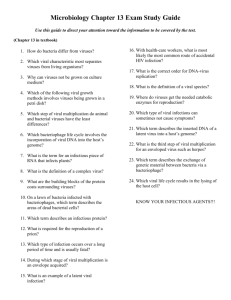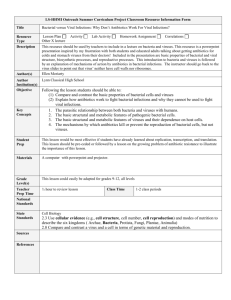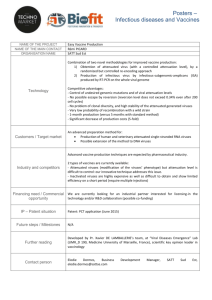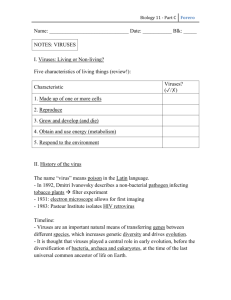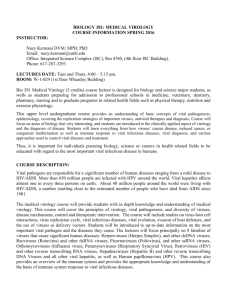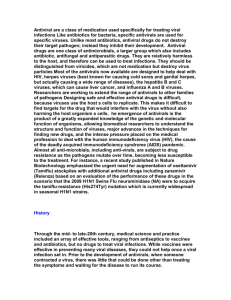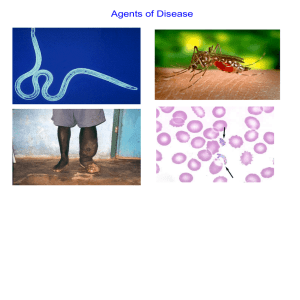Biodetection Lesson
advertisement
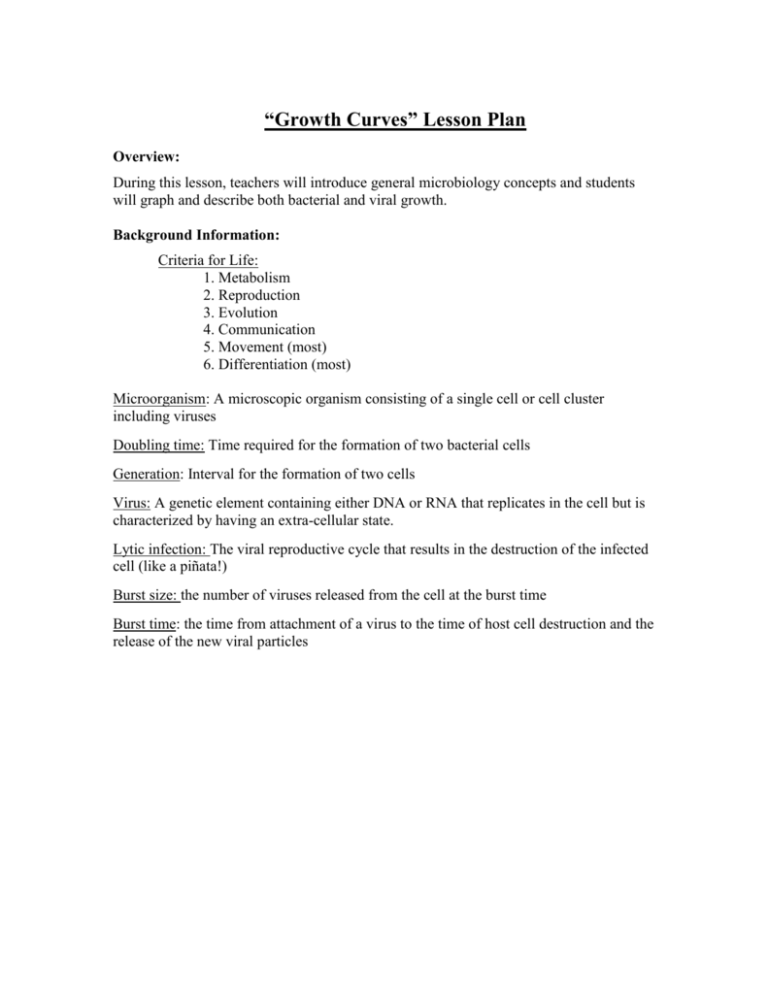
“Growth Curves” Lesson Plan Overview: During this lesson, teachers will introduce general microbiology concepts and students will graph and describe both bacterial and viral growth. Background Information: Criteria for Life: 1. Metabolism 2. Reproduction 3. Evolution 4. Communication 5. Movement (most) 6. Differentiation (most) Microorganism: A microscopic organism consisting of a single cell or cell cluster including viruses Doubling time: Time required for the formation of two bacterial cells Generation: Interval for the formation of two cells Virus: A genetic element containing either DNA or RNA that replicates in the cell but is characterized by having an extra-cellular state. Lytic infection: The viral reproductive cycle that results in the destruction of the infected cell (like a piñata!) Burst size: the number of viruses released from the cell at the burst time Burst time: the time from attachment of a virus to the time of host cell destruction and the release of the new viral particles Bacterial Growth Activity: Use provided Bacterial Growth diagram (slide 32) to describe bacterial reproduction and ask the students to do the following: • Graph viral growth (viruses vs. time) – Must use appropriate scales and label axes • Describe the growth curve – Describe the shape of the graph (i.e. function) – Provide an equation of the graph • Calculate and answer the following questions (or similar) – If we have 32 Cells, how many generations have occurred – How many cells will be produced in 6 hours? Viral Growth Activity: Use provided Lytic Infections diagram (slide 36) to describe viral reproduction and ask the students to do the following: • Suppose a given virus has a burst size of 10, and a burst time of 1 hour. How many viruses would be produced from a single viral cell in two hours? • Graph viral growth (viruses vs. time) – Use appropriate scales and label axes • Calculate how much time is necessary to produce 1 million viruses? “Build a Virus” Lesson Plan Overview: The purpose of this lesson is to introduce students to simple concepts of virology. Student will learn about the shapes of viruses and how the immune system defends the body against viruses. Background Information: Lessons will begin with the reading of The Magic School Buss, inside the Human Body On page 17, the story describes how white blood cells destroy germs. The designed lesson will branch from this concept. Explain to the students that there are multiple kinds of germs (for example bacteria and viruses). Ask how many students have been sick with a cold or the flu. Explain to the students that viruses cause the common cold and flu. Use the provided reference figures to show students what viruses can look like. Explain to the students that white cells recognize viral particles by creating antibodies. Antibodies are proteins that act like arms, and the ends of the arms match the shapes of specific viral particles (like a lock and key). Activity: Students will be allowed to design and build their own viral particles using simple materials (Styrofoam balls and pipe cleaners) that can be obtained from most craft stores. Allow students to pick different sized/shaped Styrofoam objects for heads, and decorate the heads with pipe cleaners as seen on the following page. Antibodies will also be made of pipe cleaners and will use Styrofoam wreaths (cut in half) as the binding sites. Once both viruses and antibodies are formed, allow the class to match their antibody and virus shapes with those created by other students. Other materials can be substituted as needed. Hand-washing Activity Overview: The purpose of this lesson is to show how easily germs can spread and the importance of washing hands. Activity: Have students separate into groups and the lineup. Sprinkle Glo Germ® on the hands of the first student in each line. Have the student then turn and shake the hand of the student behind them. Repeat until all students have shaken hands. Turn off the lights and hold a black light overtop the students’ hands to see how the “germs” have spread. Then have the students’ wash their hands and hold the black light overtop of their hands to see how well they washed their hands. Hand washing Posters: Lastly, have students draw and color their own hand-washing poster to take home. Create similar posters for the classroom and place by the classroom’s sink to help enforce the idea of hand washing. Discuss other ways to prevent illness o Covering your mouth when you cough or sneeze o Washing your food o Do not share beverages

